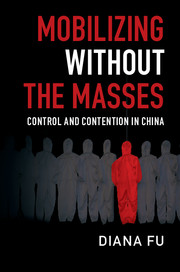Book contents
- Mobilizing Without the Masses
- Studies of the Weatherhead East Asian Institute, Columbia University
- Cambridge Studies in Contentious Politics
- Mobilizing Without the Masses
- Copyright page
- Dedication
- Contents
- Figures and Tables
- Preface
- 1 Organizing under Duress
- Part I Technologies of Control
- Part II Coaching Contention
- Appendix Political Ethnography
- Bibliography
- Index
- Series page
- References
Bibliography
Published online by Cambridge University Press: 07 November 2017
- Mobilizing Without the Masses
- Studies of the Weatherhead East Asian Institute, Columbia University
- Cambridge Studies in Contentious Politics
- Mobilizing Without the Masses
- Copyright page
- Dedication
- Contents
- Figures and Tables
- Preface
- 1 Organizing under Duress
- Part I Technologies of Control
- Part II Coaching Contention
- Appendix Political Ethnography
- Bibliography
- Index
- Series page
- References
- Type
- Chapter
- Information
- Mobilizing without the MassesControl and Contention in China, pp. 170 - 185Publisher: Cambridge University PressPrint publication year: 2017

